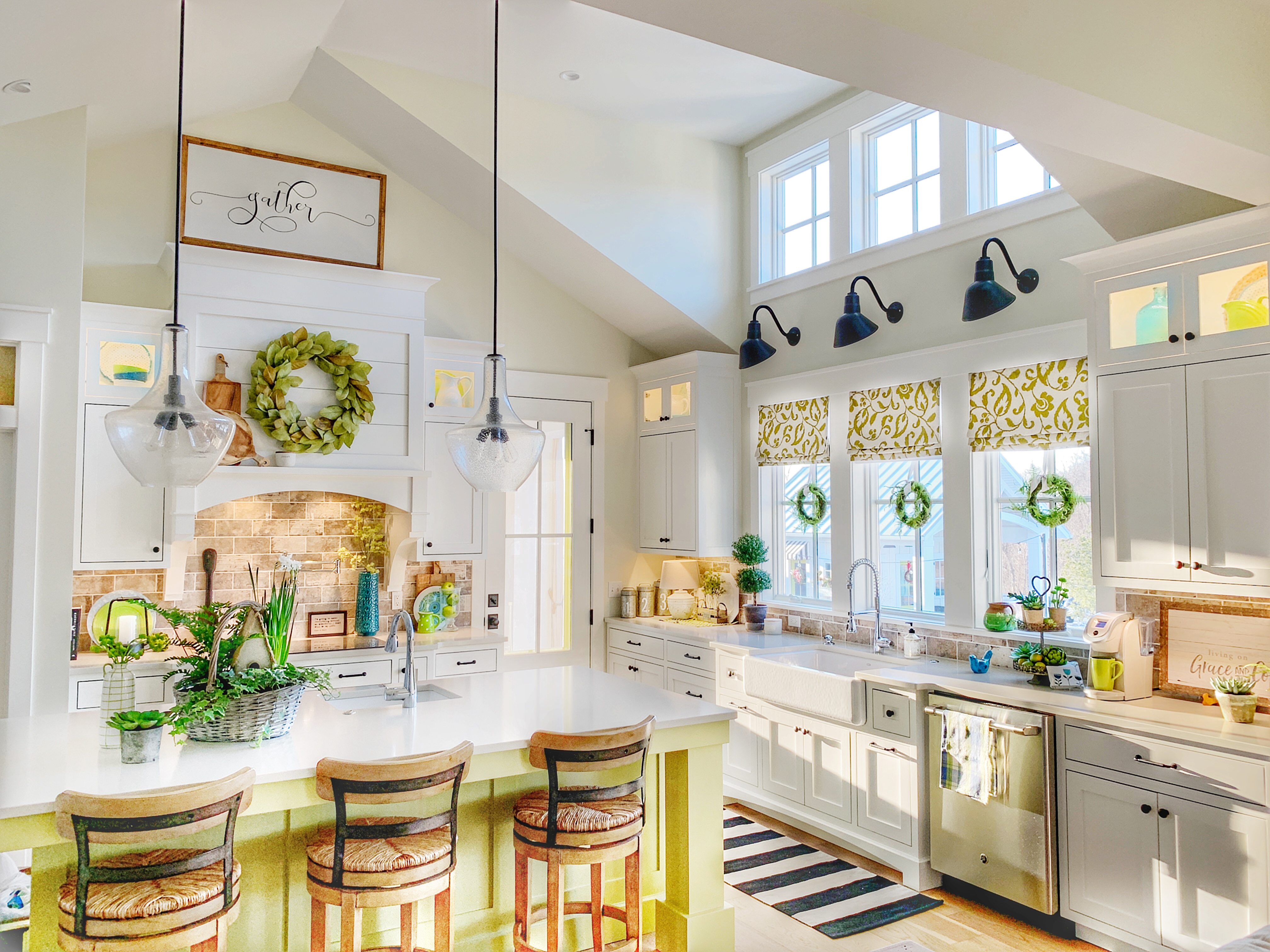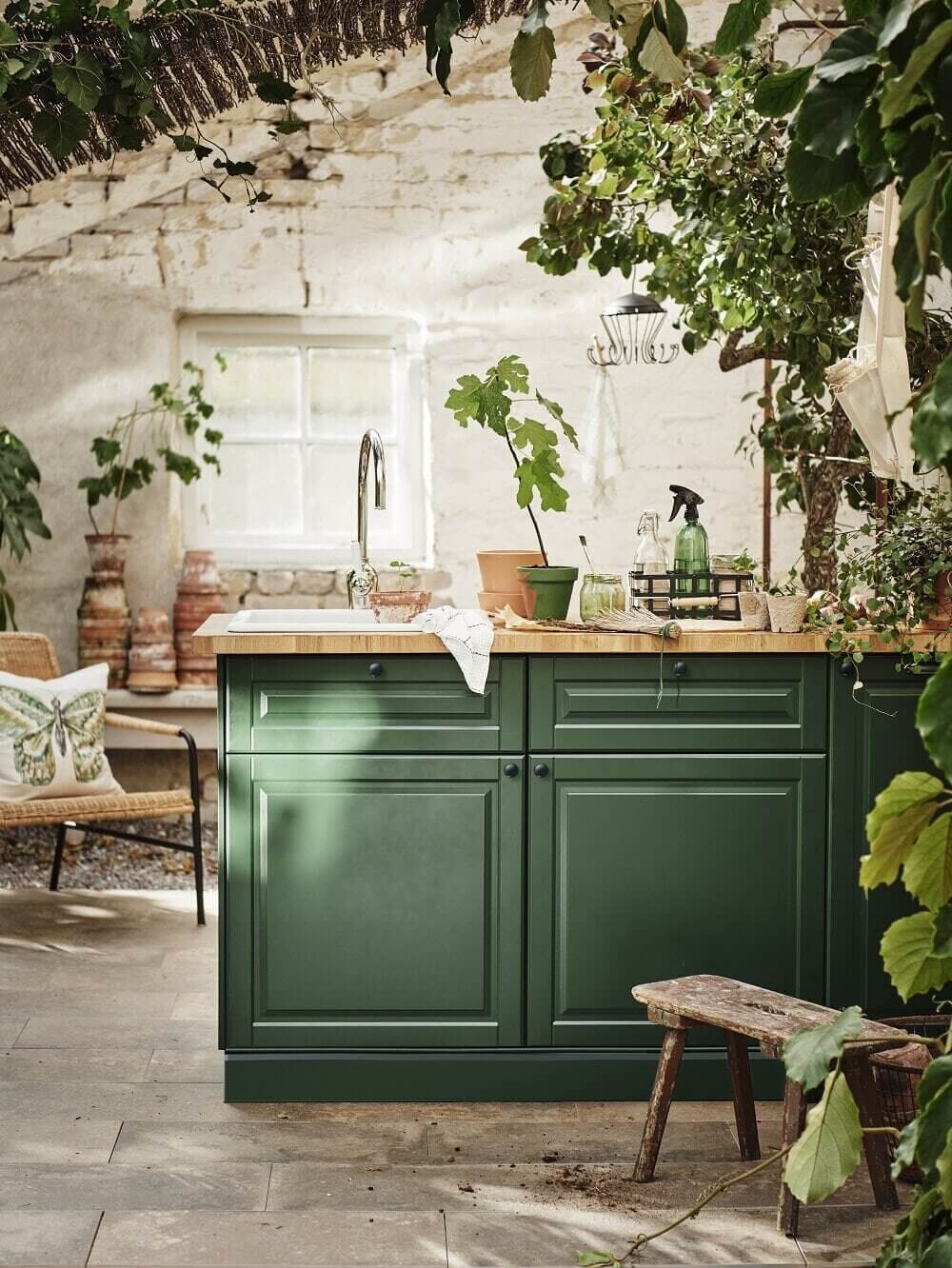As someone who has always found solace in nature, I’ve learned that the kitchen can be more than a place for cooking. It’s an extension of our living space, a canvas to express our personality, and a sanctuary for culinary creativity. Incorporating greenery into your kitchen decor not only enhances the aesthetics but also offers numerous health benefits. Let’s explore how to create a kitchen filled with life and vibrancy through greenery decor.
Why Choose Greenery Decor for Your Kitchen?
Integrating plants into your kitchen isn’t just about aesthetics; it brings a plethora of benefits. Here’s why you should consider greenery decor:
- Air Purification: Many indoor plants naturally filter toxins from the air, improving air quality.
- Increased Humidity: Plants release moisture vapor, which helps maintain humidity levels and can reduce respiratory issues.
- Enhanced Mood: Greenery brings an instant mood boost, making your time in the kitchen more enjoyable.
- Connection to Nature: Being around plants enhances creativity and calmness, allowing for a more pleasurable cooking experience.
Benefits of Adding Plants to Your Kitchen Decor

| Benefit | Description |
|---|---|
| Air Quality | Plants absorb carbon dioxide and produce oxygen, enhancing indoor air quality. |
| Aesthetic Appeal | Greenery adds color, texture, and life, making your kitchen feel more welcoming. |
| Culinary Enhancement | Herbs can be used in cooking, providing fresh flavors right at your fingertips. |
| Stress Reduction | The presence of plants can reduce anxiety and promote relaxation. |
Choosing the Right Plants for Your Kitchen

The first step in your greenery journey is selecting the right plants. Not all plants thrive in kitchen environments. Here are some of the best options for kitchen decor:
Low-Maintenance Plants

- Snake Plant: Very hardy, requires minimal light and watering.
- Pothos: Grows well in various light conditions, making it perfect for kitchens.
- Spider Plant: Hardy and great for air purification.
Herbs for Culinary Use

- Basil: Perfect for sauces and salads, thrives in sunlight.
- Mint: Great for beverages and desserts, easy to grow.
- Rosemary: Good for seasoning, can be grown in pots indoors.
Flowers for Aesthetic Appeal

- Orchids: Elegant and colorful; they require indirect sunlight.
- Geraniums: Bright blooms that can handle a variety of conditions.
Comparison Chart of Popular Kitchen Plants

| Plant | Light Requirements | Watering Needs | Size |
|---|---|---|---|
| Snake Plant | Low to bright indirect light | Every 2-6 weeks | Up to 3 feet |
| Pothos | Low to bright indirect light | Every 1-2 weeks | Up to 10 feet (if trailing) |
| Basil | Direct sunlight | Weekly | 1-2 feet |
| Mint | Indirect light | Regularly | 1-2 feet |
Creative Ways to Incorporate Greenery in Your Kitchen Decor

Now that you’ve selected your plants, let’s explore some creative ways to display them in your kitchen.
Vertical Gardens
For those with limited counter space, vertical gardens are an excellent option. They not only save space but also create a stunning visual feature.
How to Create a Vertical Garden:
- Select a wall or area with sufficient light.
- Use hanging planters or wall-mounted racks to hold the plants.
- Choose plants that require similar care for ease of maintenance.
Window Sill Herb Garden
Utilizing your window sill for growing herbs is a fantastic way to bring greenery into your cooking routine. Imagine snipping fresh basil or mint while preparing dinner!
Tips for a Successful Herb Garden:
- Ensure your window gets plenty of sunlight.
- Use pots with drainage holes to prevent waterlogging.
- Rotate plants periodically for even sunlight exposure.
Hanging Plants
Hanging planters can add visual interest and draw the eye upward, creating a more dynamic environment.
Choosing the Right Location:
- Install hooks from the ceiling or use wall-mounted brackets.
- Consider the light conditions in the area.
Maintaining Your Kitchen Plants
Keeping your plants healthy requires some basic care. Here are key maintenance tips:
Watering and Light Needs
Understanding the specific needs of your plants is crucial for their survival. Always check the soil moisture before watering.
Fertilization
During the growing season, use a balanced fertilizer to provide essential nutrients.
Pest Control
Keep an eye out for pests and diseases. Regularly inspect your plants and use natural pest control methods when necessary.
Pros and Cons of Using Greenery Decor in Your Kitchen
Pros
- Enhances air quality and humidity.
- Provides fresh ingredients for cooking.
- Adds beauty and liveliness to the space.
Cons
- Requires regular maintenance and care.
- Some plants may not thrive in all kitchen environments.
- Potential for pests if not managed well.
Inspiration and Real-Life Examples
To give you a clearer picture of how beautiful kitchen greenery can be, here are some inspiring real-life examples:
Example 1: Urban Chic
A contemporary kitchen featuring herbs in stylish ceramic pots on the counter, alongside a vibrant wall-mounted vertical garden with trailing plants, showcases a refined yet relaxed urban vibe.
Example 2: Rustic Retreat
Imagine a cozy farmhouse kitchen adorned with hanging baskets of ferns from the ceiling, fresh flowers on the dining table, and a built-in herb garden by the window.
FAQs About Greenery Decor for Kitchen
What are the best indoor plants for kitchens?
Some of the best indoor plants for kitchens include snake plants, pothos, and various herbs like basil, mint, and parsley. These plants are hardy and adapt well to kitchen conditions.
How can I prevent pests in my kitchen plants?
Regularly inspect your plants, keep them clean, and use natural pest control methods, such as neem oil, to deter pests without chemicals.
Do kitchen plants need direct sunlight?
Most kitchen plants prefer indirect sunlight, but certain herbs, like basil, thrive in direct sunlight. Assess your kitchen’s lighting conditions to choose the right plants.
Can I grow vegetables in my kitchen?
Yes! Many vegetables, such as cherry tomatoes, peppers, and lettuce, can be grown in pots indoors with sufficient light. They provide a rewarding gardening experience and fresh produce.
Conclusion: Bringing Your Kitchen to Life with Greenery
Incorporating greenery into your kitchen decor is a delightful way to enhance your cooking space, making it not only more visually appealing but also healthier and more functional. Whether through herbs, low-maintenance houseplants, or vibrant flowers, the benefits are immense. With the simple tips and ideas laid out in this article, you’re now equipped to transform your kitchen into a lush, relaxing haven. Embrace the beauty of nature, and enjoy the culinary creativity it inspires!